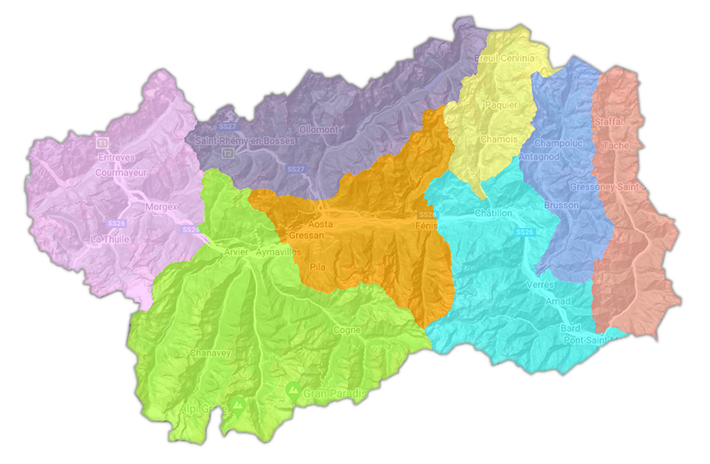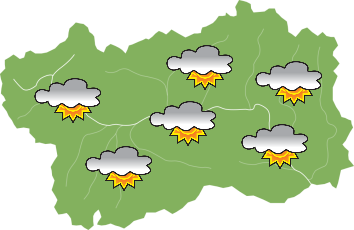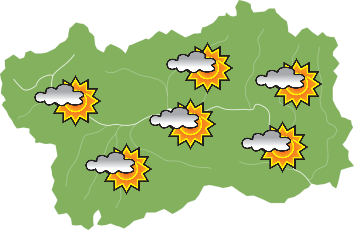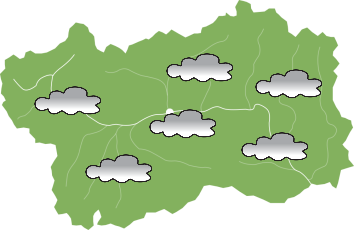The charm and elegance of the castles of the central Valley
Resort: Châtillon, Fénis, Nus, Quart, Saint-Denis, Saint-Marcel
For information on the opening hours and tips on how to visit the Castles, please consult the corresponding links. Some castles can only be visited from the outside.
How: by car.
Recommended duration: two days.
Recommended period: all year round.
Length: about 43 km.
A journey dedicated to the discovery of the middle valley where vineyards and chestnut trees surround ancient homes and fairytale castles.
Leaving Aosta and heading in the direction of Turin, after passing through the municipality of Saint-Christophe and looking at the sun drenched slopes on the left, we come across a stern-looking castle tenaciously gripping the rock and looming over the valley. This is Quart Castle. The castle cannot be visited as it is currently being restored. It houses valuable examples of architecture and painting that range from the 12th century to the 17th century.
The name Quart originates from the fact that this was a stopping point along the Roman road, four miles from the ancient Augusta Praetoria, the current Aosta - Ad quartum (lapidem) - but the area has been inhabited since the fourth millenium B.C., as testified by the the necropolis of cist graves in the locality of Vollein (site not open to visitors).
Crossing onto the other side of the Dora river, a few km after Quart, we reach the village of Saint-Marcel which is embellished by a fascinating castle of the ‘rural-residential’ type in the locality of Surpian; dating back to the 14th-15th centuries and owned by the Aymavilles branch of the Challant family. Since 2009 the manor has been the subject of study as part of the Interreg project ‘AVER – Anciens Vestiges En Ruine’, the results of which will lead to a full valorisation of this interesting building. Also worth visiting is the ancient Plout Sanctuary, dedicated to ‘Notre Dame du Tout Pouvoir’, the subject of a strong and widespread popular devotion and destination of frequent pilgrimages.
The hamlet of Nus is located at the mouth of the Saint-Barthélemy valley, near the route of the Roman road of the Gauls to which it owes its name, deriving from the distance of nine - Ad Nonum - Roman miles from Augusta Praetoria and is located in a wide open space of meadows, vineyards and chestnut tree groves. In the historical centre of the hamlet visitors should pay a visit to the so-called Pilate’s Castle, a turreted stronghold of the Lords of Nus dating back to the thirteenth century and named after a legend that claims that Pilate stopped here on his journey in exile towards Gaul. From an elevated position above the hamlet stands the grim castle of the Barons of Nus, dating back to the thirteenth century (privately owned and not open to the public). In some documents of the 17th and 18th centuries, the castle is described as a comfortable residence further refined by the gardens: a loggiato used to overlook the inner courtyard and the cladding is still visible to this day. Inside there was a large reception room called the ‘Salle rouge’ (Red room), perhaps identifiable with the frescoed room, from around 1680, of mythological scenes alternated with the heraldic coats of arms of the Lords of Nus.
From Nus, in just a few minutes by car, we can reach the municipality of Fénis, located on the shaded slope of the envers of the valley, on the opposite bank of the Dora river. Here, solemnly standing in a large clearing, the most famous and scenic medieval castle of the Aosta Valley makes a beautiful impression. Originally property of the powerful house of the Challant family, its double defensive curtain wall, battlements and many watchtowers make this castle a real symbol of the ‘Middle Ages’ in the Aosta Valley.
Descending to the bottom of the valley, we reach the municipality of Chambave, from which we can take the road to Saint-Denis. In this locality looms the spectacular Cly Castle. Rising up on rocky outcrop that gives control over the entire valley in an area that saw settlements dating back to prehistoric times (Bronze Age and Iron Age), this castle is fully part of the category of so-called ‘primitive castles’ by virtue of its mighty_donjon_, that dates back to the first thirty years of the 11th century, and the military chapel dedicated to Saint Maurice, a jewel of Romanesque architecture. The castle belonged to Cly branch of the Challant family and was the legal seat of a vast estate that included the territories of Verrayes, Diémoz, Saint-Denis, Chambave, Antey, Torgnon, up to the entire area of Valtournenche. Following dramatic events it passed on to the House of Savoy who kept it until 1550. In the 17th century the building was purchased by the Barons Roncas who distmantled many materials for the construction of their palazzo of Chambave.
Leading on to Châtillon in the Breil locality, visitors are greeted by the elegant Gamba Castle, built by Baron Carlo Maurizio Gamba between 1901 and 1903 and which today has become the seat of the regional gallery of modern and contemporary art, after a long and complex restoration. The impressive grounds with exotic plants and special plant species is particularly noteworthy.
On the opposite bank of the Dora river, perched on the rock, stands the massive Ussel Castle, built by Ebalo di Challant towards the middle of the 14th century. The first example of a monoblock castle in the Aosta Valley, Ussel Castle represents a real turning point in fourteenth century military architecture. After passing from the Challant family to the House of Savoy several times and vice versa, the castle was used as a prison through to its complete abandonment. In 1983 Baron Marcel Bich, after having purchased the castle from the Passerin d‘Entrèves family, heirs of the Challant family, donated it to the Region which then arranged for its restoration and transformation as an exhibition space.










